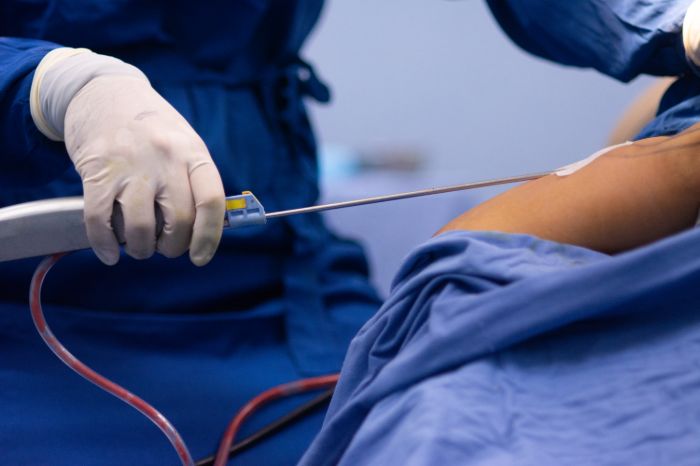before and after.
before and after.
Galerie
About Tummy Tuck
People no longer have to live with the distress that is caused by an unsightly stomach. Beyond the aesthetic improvement, an important quality of life improvement, both functionally and psychologically, helps the patient to take care of his or her weight balance in the future. The good news is that developments in liposuction have transformed this surgery, making it possible to reduce the invasiveness of the surgery and the resulting scar.

Type of Tummy Tuck & Methods of Treatment.

Aesthetics surgery
The length of the incisions (corresponding to the future scars), is determined by the localisation and the amount of the skin to be excised. The excess of fat tissue is extracted by liposuction and the abdominal muscles are tightened together to reach a certain tension.
At the end of the surgery a modelling bandage is applied. The duration of the surgery varies between 9O minutes and 3 hours, according to the preoperative plan.
Aesthetics
Time of work
The duration of hospitalisation varies from one to four nights. Mini-abdominoplasty generally does not require a hospitalisation.
The results
The scar is often visible during the first three months, then it flattens and improves over one to three years. Avoiding direct sun exposure to the scar is highly recommended during at least three months after the surgery. Sports, sexual and physical activity can gradually be resumed over six weeks.
Type of Anaesthesia and Hospitalisation
An abdominoplasty almost always requires a traditional general anaesthesia, however a mini-abdominoplasty can be practice with sedation and local anaesthesia.
An abdominoplasty, although carried out for aesthetic reasons, is an important surgical procedure which carries the risks related to any medical operation. It is necessary to distinguish the complications related to the anaesthesia from those related to the surgical procedure. With regard to the anaesthesia, the anaesthesiologist will inform you about the anaesthetic risks. It should be known, indeed, that the techniques, the anaesthetic products and the methods of monitoring have made immense progress these twenty last years, and currently offer optimal safety. Concerning the surgical procedure, the risks are minimized by choosing a qualified surgeon.
The complications that can arise during this procedure include: Thromboembolism (phlebitis, pulmonary embolism, etc), although overall rather rare, is among the most serious complications. Rigorous precautionary measures are used to minimise these incidences. These include, the use of anti-thrombosis agents, early mobilisation and if needed anticoagulant treatment. Haematoma, in fact rare, can justify a drainage in order to avoid a secondary deterioration of the aesthetic result. Infection, which is very rare, will require a surgical drainage and an antibiotic treatment. Seroma, the most common complication, can be observed from the 8th day and results from the collection of lymphatic liquid. It can be simply aspirated generally without any particular after effect. Localized cutaneous necrosis is very rare and results from excessive tension in certain areas. Decrease of the sensitivity of the sub-umbilical area can be observed, but this returns within three to 12 months. Finally, a delay on the wound healing process can be observed in diabetics and smokers.

Melden Sie sich für unsere detaillierte Preisliste.







